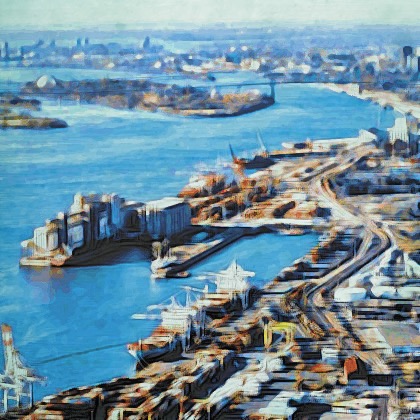
Carriers: Cash and Roll
April 15, 2022
Speed Limits & Trucks
April 29, 2022Optimal Routing

Longer Route…Shorter Time?
Sometimes the quickest route between two points is not a straight line.
The prospect seems simple. A customer needs to move freight from Point A to Point B. 3PLs typically work in tandem with dispatch and carrier to map out the most optimal path, and that typically means the shortest distance. All of which saves on fuel cost, delivery cost, and time.
What happens when that straight line is hampered by circumstances beyond anyone’s immediate control? Think of a bad weather event or other natural disaster that floods a highway or knocks out a bridge.
Now think about the bottlenecks at the ports of Los Angeles and Long Beach that for a time caused ships to wait up to eight miles out and days away from being able to dock. And then, with the bottleneck piling up, finding a place to unload became a challenge. And then, yes, the driver shortage.
That scenario has been a major contribution the past couple of years to low inventory in various industries, including groceries, lumber, and electronics.
They chipped away at the problems. The ports in southern California ramped up to operating round the clock. Commercial driving schools added extra days and hours of operation to help get qualified drivers on the road. Larger companies sweetened pay scales with signing bonuses and higher starting salaries.
Not a perfect solution. Too many moving parts. Too many variables. Yet, we seem to be moving through the bottleneck of our ever-changing supply-and-demand situation.
So, it’s eyebrow raising to read a recent Transport Topics article. “Montreal Port’s Pitch to Shippers: No Waiting.”
The head of Canada’s second-biggest port has a supply chain sales pitch few of his peers in the global shipping industry can match: zero wait time at sea for container traffic…[T]he ability to dock and load efficiently there is luring new clients even though doing so requires traveling the length of the St. Lawrence River, 620 miles inland from the Atlantic Ocean.
The article describes how the wait time at the Port of New York and New Jersey spiked to 4.75 days at the end of last year, and how companies have altered shipping patterns to reduce delays.
It’s all quite interesting. In this scenario, having more options spreads the wealth and revenue, not least of the ports. That’s not optimal for ports that are conveniently located (New York, Los Angeles). Yet, consumers are none-too happy about delays. At the end of the day, they care more about having a product than the route that product took to reach them.
The Port of Montreal Promo Video

